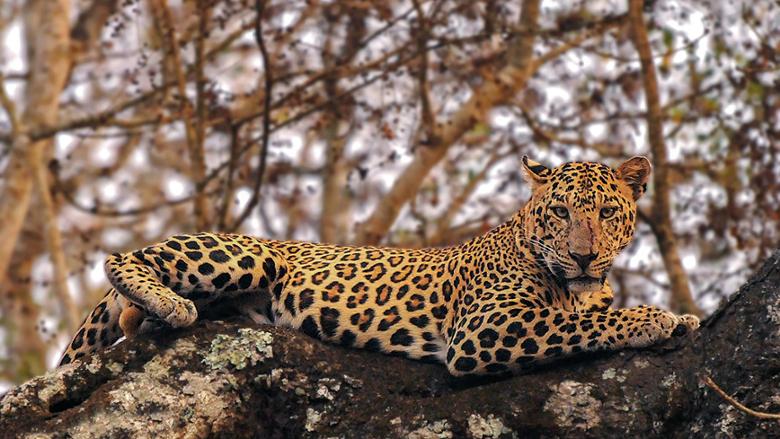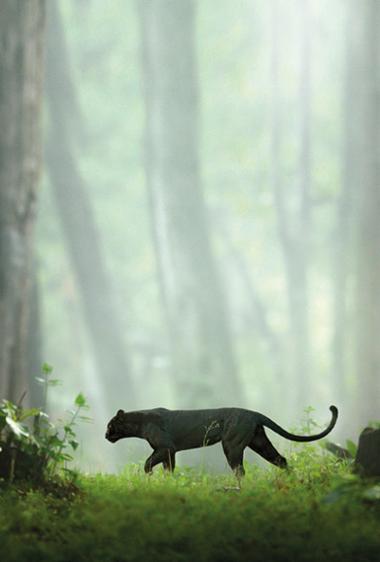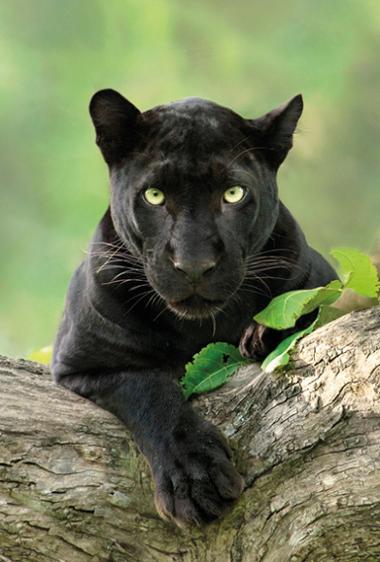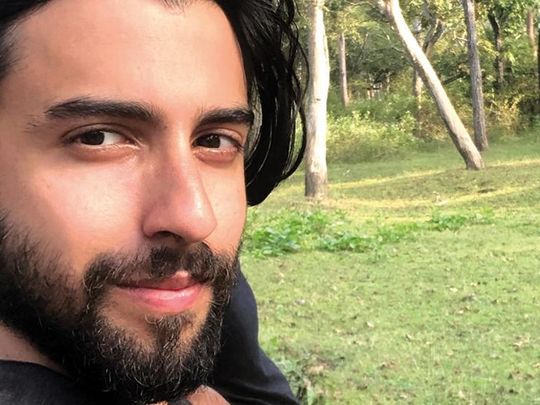
There are no second chances in the wild. Nothing runs by the clock in the forest as nature blithely moves on its own rhythm. What are the chances of spotting a big cat charging out of the bushes holding a bloody kill in its mouth in the wild? Or, to stumble upon the spectacular sight of a rare black panther with piercing golden-yellow eyes, hunched over a waterhole slaking his thirst even as he flicks his long curly tail around?
Shaaz Jung, Bengaluru-based naturalist, wildlife photographer and cinematographer, is drawn to this "unpredictability" in the wild, which makes each day a unique one in the jungle. Jung, who has shot a documentary, The Real Black Panther, that was shown on the National Geographic Wild channel, spent 10-12 hours a day for three long years in the forest, along with his team trailing the elusive black panther, which they had named Saya (shadow).
Talking about the challenges of shadowing a black panther in the jungle, Jung says in an interview with Friday, "Wildlife is unpredictable. No matter how much we plan, nature writes its own script. Every day is a new story and you have to go with the flow. So, we would spend as much time as possible in the jungle to not miss that 20-second shot to add to Saya’s story. And, in the end, we would be rewarded for our patience." Luckily, it helped that leopards liked to court their mates on the trees making it easier for the crew to shoot some amazing footage of the not-so-monogamous Saya with multiple female leopards.
The 40-minute documentary trails a lone black panther, who narrates his own struggle to establish himself as the dominant male leopard in the Kabini Wildlife Sanctuary, once the hunting grounds of Mysore Maharajas. Situated around 220km from Bengaluru in Karnataka, Kabini is part of one of India’s famous tiger reserves, the Nagarhole National Park.
Black panthers, which evoke memories of the wise Bagheera in Jungle Book for many, is actually a melanistic leopard, whose fur has turned black as the result of a recessive gene. In the documentary, you can clearly see the leopard spots on the panther through its black coat!
Jung first saw Saya in 2016, after hearing about his presence in Kabini. He recounts his first sighting, "I had been looking for him for over a year. I was in the tourist zone, it was twilight and we took this turn and there he was standing on the road – the most powerful and beautiful sight I had ever seen. He was so dark, darker than the night staring at us with his luminous eyes and I just went numb." It is this particular big cat species that had sparked his love for wildlife.
"I have been fascinated by the leopard though it is not the apex predator in Kabini. Tigers and wild dogs are above them. I love this feline’s ability to successfully adapt and survive in different terrains. The leopard has to be twice as intelligent to move through this forest along with the larger predators," says Jung, who had been documenting leopards in Kabini with his camera when Saya crossed his path.
By 2017, he had enough stunning shots of the alpha male to approach National Geographic with the idea of making a documentary. They jumped at it and he got a filming permit to access the Kabini sanctuary anytime he wanted. That is when he embarked on a journey, from 2017 to 2020, to trace the life of this big cat as it tries to hunt and live in the shadows, against all odds in Kabini’s dry tropical forest.
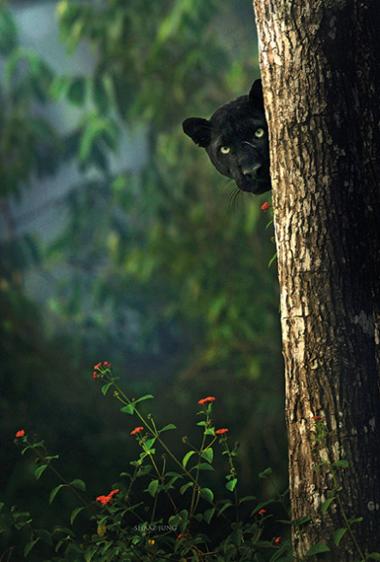
It was a once-in-a-lifetime opportunity to study this mysterious and elusive big cat at close quarters. Black panthers have been sighted sporadically in different parts of India like Manas in Assam, Kerala, Niligiris and Dandeli but they have not been documented so extensively, Jung points out.
The experience has been "extremely long, tiring and frustrating but equally rewarding". One sequence stands out of for him in the documentary: when Saya and his beautiful mate Cleo, who are strolling together, simultaneously turn around to look at the camera.
"We knew this was the end of the documentary and this will be the closing shot. We had shot for three years and we were running out of time. It was an emotional moment for me because I was wrapping up my first film on a unique feline. It had been extremely difficult to track him, like looking for a needle in the haystack. I cannot imagine doing another film on him!" Jung says.
It is the impermanence of life in the jungle that left an impression on Jung’s mind after his close brush with nature. When a mother leopard leaves her baby fawn to the predator and skitters away to safety, it means nothing in the bigger picture, he says about a scene from the film. Jung reflects, "It just means that life goes on and this is how it needs to be. Life goes on for animals and they are replaced by someone stronger. This helps to keep the gene pool strong, the forest alive and it helps to maintain the balance."
Humans, on the other hand, are parasites sucking the host – which is Mother Earth – dry, he says. "Nature, however, has ways to correct this imbalance. There are several deadlier coronaviruses to be contracted through animals, which are on the brink of breaking out if we don’t change our lifestyle or fail to understand the power of nature," warns the 32-year-old big cat tracker.
Belonging to the erstwhile royal family of Bhopal, Pataudi and the aristocratic Paigahs of Hyderabad, Jung took up wildlife photography as a career, after he took charge of his parents’ eco-resort in Kabini. His father Saad bin Jung was a famous former cricketer like his maternal uncle, Nawab Mansoor Ali Khan of Pataudi, and a conservationist as well.
Jung was a baby when his parents moved to the forest to set up their eco-resort in 1988. He grew up in the jungle and his closest friend was Wilson, an elephant who was born in the same year as Jung. With not much of a social life as a child, his evenings were largely spent with the baby pachyderm and his mahout.
After forging deep bonds with these jungle inmates, sometimes even being able to explain the history of a scar on a leopard’s face (who he has named Scarface), Jung is penning a book of short stories on these wild animals. He is also writing a book on the black panther and is pitching for another documentary.
Concerned about the rising animal-human conflicts in the wild in India, Jung is involved too in raising awareness on wildlife conservation. To him, it is key for the natural wheel of life in the jungle to keep turning with the least interference from the intrusive human.



